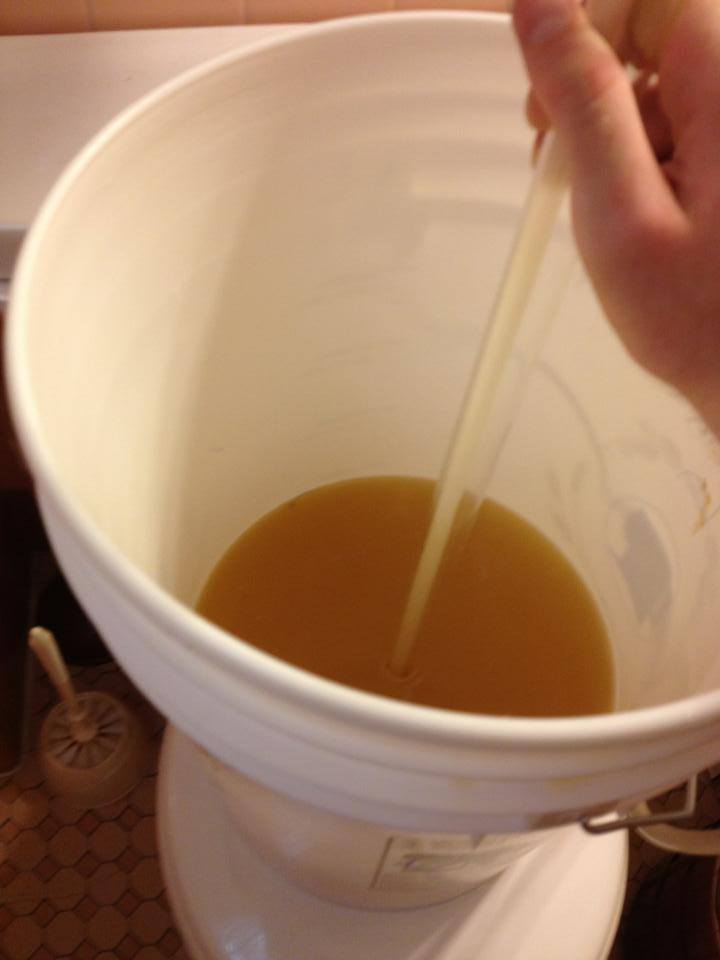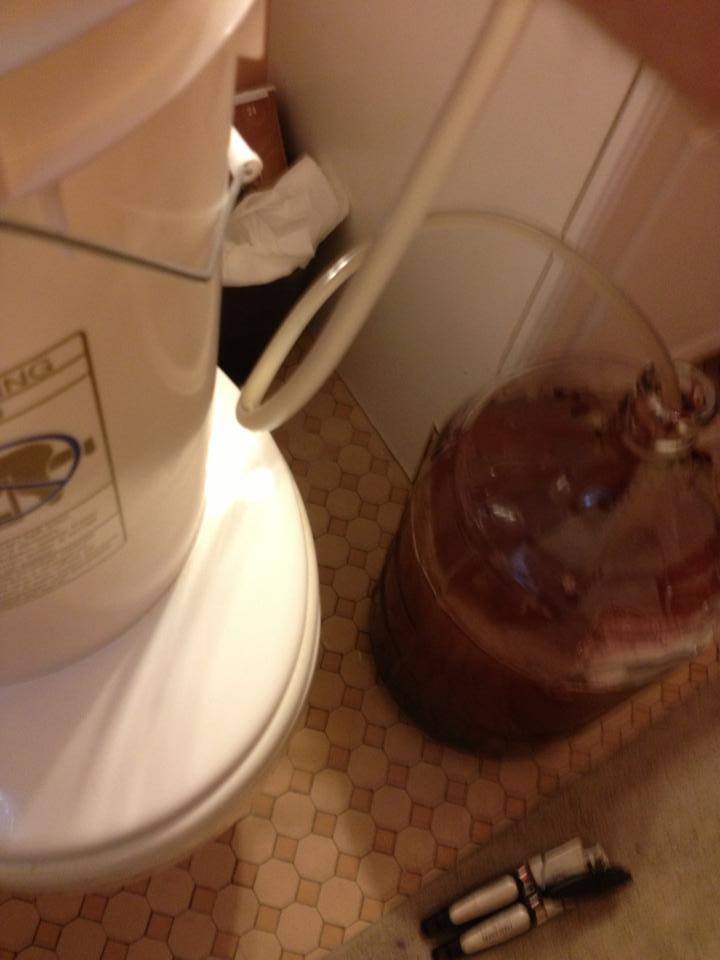Ok so it’s been 2 weeks and your must has been fermenting in your primary vessel. Great! Now it’s time to transfer your must over to your secondary fermenter. The secondary fermenter we’ll be using is a glass carboy. The advantage to using one of these is that you can see everything that is going on, and glass is more conducive to long aging because it won’t let in any air at all over a long stretch. Some people use a glass carboy for their primary fermenter which is perfectly acceptable. It’s best not to get hung up on what is correct and what isn’t correct. As always, be sure to sanitize everything that will come in contact with your must.
For this step you will need to get out your siphoning tubes and whatever you use to start your siphon going. I use something called an auto siphon which is basically a big tube in which you can pump the mead to start the siphon.
Pop the top to your fermentation bucket and do a check on your must. Take a sniff to see if it smells correct. Does everything look alright at this point? Obviously this is a good time to take a hydrometer reading as well. If everything is looking alright, go ahead and attach your auto siphon to your tubing and stick the auto siphon in the bucket. Try to position it so that the bottom of the tube is in the middle of your bucket. The bottom of your auto siphon should be set up in such a way that it’s drawing in liquid about an inch up from the bottom in order to keep the spent yeast from getting into the tube. That is something you want to avoid. Don’t worry about that small amount of liquid mixed with spent yeast in the bottom of the bucket as you don’t want that in your secondary clouding everything up.

At this point in the process you want as little oxygen coming into contact with the must as possible which is why we are siphoning in the first place, but it bears mentioning because you want as little splashing as possible as oxygen will cause off flavors.

Once you get all of the must transferred over to your secondary, try to move your fermenter with as little splashing as possible to a dark room temperature place for aging. Once you get it to your spot, place the air lock in the top of the carboy with a plastic bung. Fill the air lock up half way with water and let the must continue on it’s path to becoming mead. Because of the movement from one fermenter to another, the yeast will become active again slightly. Be aware of this and notice the air lock activity again as your final hydrometer reading may be different than the one your took from the bucket.
All you do now is sit back and wait for clarification in the mead. This could take anywhere from a month to 6 months or longer depending on what your are working with. I have waited a 2 month period before bottling for my meads before and they came out great, but you can wait longer if you wish.
The next part of the process is the bottling!
Check me out on Twitter
Follow @vikingsmashbrew
